VFL Wolfsburg drew with Hoffenheim 1-1 at the Volkswagen Arena in the Bundesliga. Alfred Schreuder’s Hoffenheim took an early lead through Sebastian Rudy’s sublime volley before Admir Mehmedi equalised for Wolfsburg just before the half-time whistle. Both sides contested the second half with intensity but neither could find the winner and had to settle for a point each. This tactical analysis aims to look at the key tactical points from the game and the tactics employed by each side.
Lineups
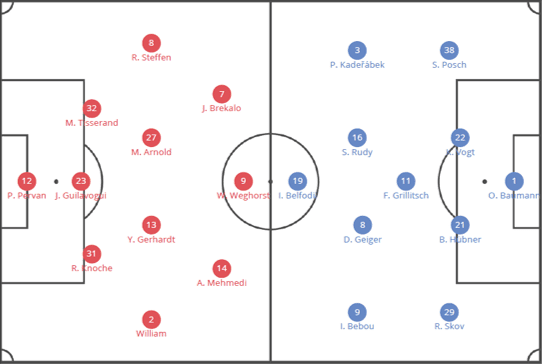
Wolfsburg lined up in a 3-4-3 formation. Joshua Guilavogui continued in his role as the central defender in a three-man defence. He was flanked by Robin Knoche and Marcel Tisserand. Renato Steffen and William played as the wing-backs on the left and right-wing respectively. In midfield, Oliver Glasner opted for a pairing for Maximilian Arnold and Yannick Gerhardt. Wout Weghorst led the attack with Mehmedi and Josip Brekalo playing on the flanks.
Schreuder’s Hoffenheim employed a 4-3-3. The defensive pairing comprised of the ever-reliable Benjamin Hübner and Kevin Vogt. In midfield, Rudy played in a trio with Florian Grillitsch and Dennis Geiger. Ishak Belfodil played as the striker with Ihlas Bebou on the left-wing and interestingly Pavel Kadeřábek playing as the right-winger. Robert Skov played as a left-back in what was a very surprising decision.
Intensity from kickoff
Right from kickoff, the game was characterized by speed, intensity and pressing. Wolfsburg, being the home side, tried to start off on the front foot. Leading from the front, the attackers were quick to press the Hoffenheim defenders when the opposition had the possession. They were supported in the press by Gerhardt and Arnold in midfield. Unfortunately, Wolfsburg’s pressing was bypassed by some intelligent passing and movement by Hoffenheim which played an important role in their opening goal. The trio of Rudy, Grillitsch and Geiger were very fluid in their movement and constantly switched positions. While Bebou started centrally, he gradually shifted wide in order to protect the flank.
Hoffenheim dominated the midfield
More importantly, they were able to outnumber Wolfsburg in midfield and created 3v2 situations. Due to Wolfsburg’s emphasis on using width to attack, Hoffenheim were able to capitalise on the home side’s lack of numbers in midfield, pushing Geiger and Rudy higher up the pitch and this consequentially resulted in the first goal which Rudy scored from just outside the penalty area.
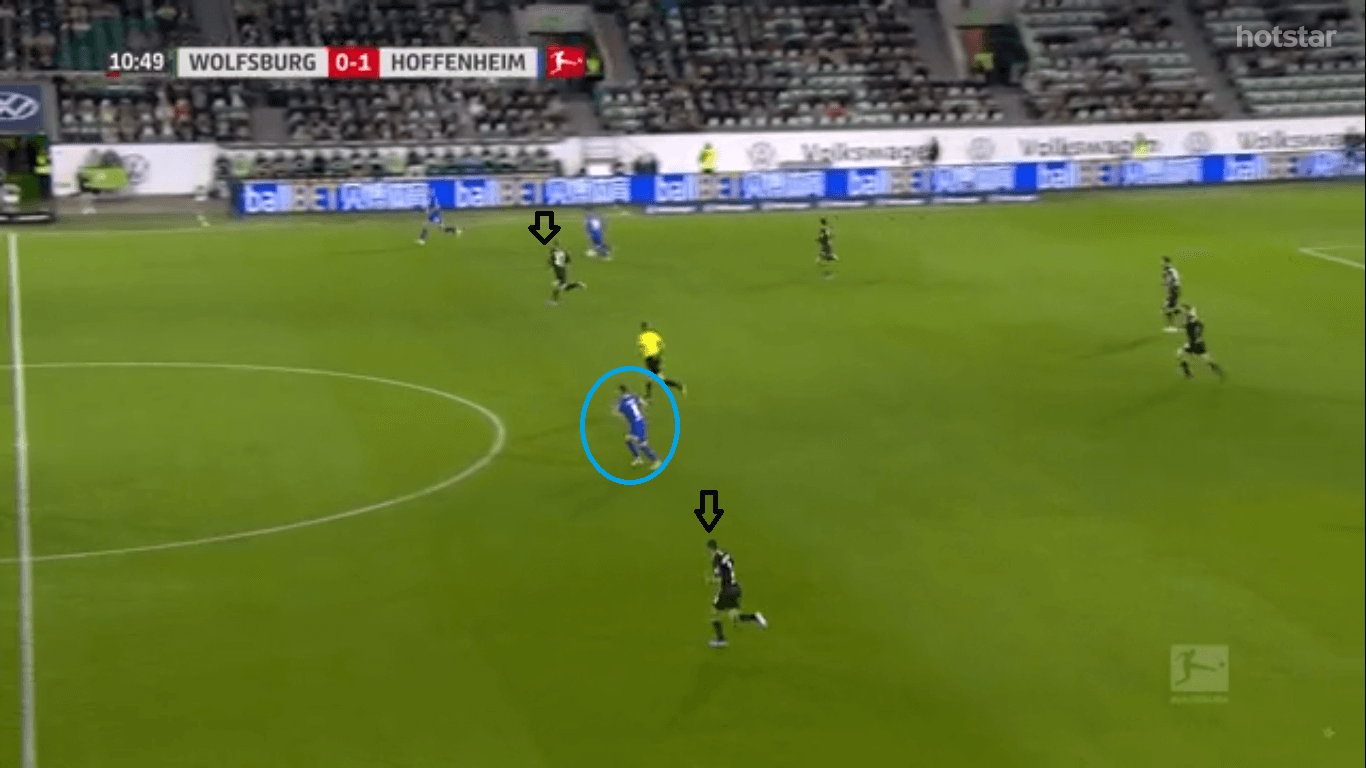
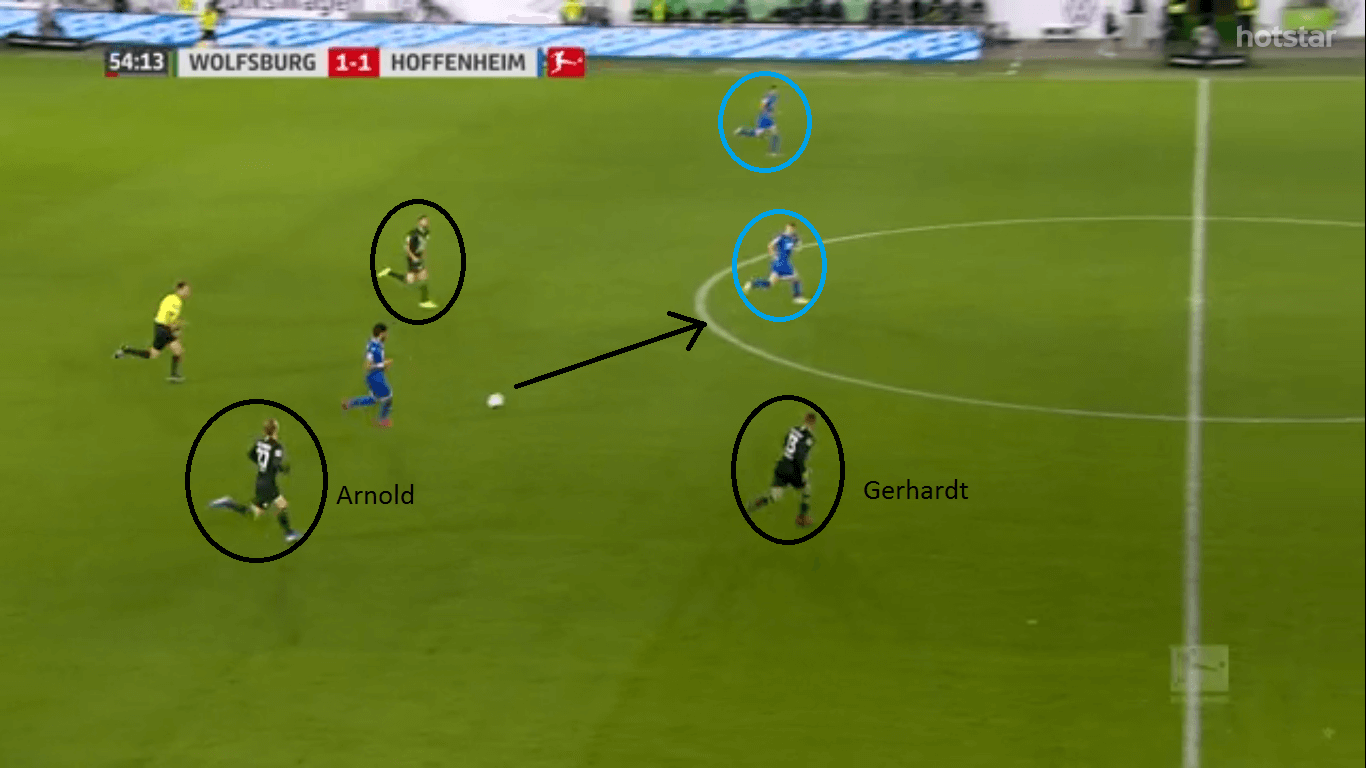
Apart from the intensity, the match also saw a lack of control from both sides. Possession statistics show that Wolfsburg had 53 percent of the possession compared to Hoffenheim’s 47 indicating that the home side failed to dominate as much as they hoped to do. Hoffenheim actually had five more shots on target than Wolfsburg’s four.
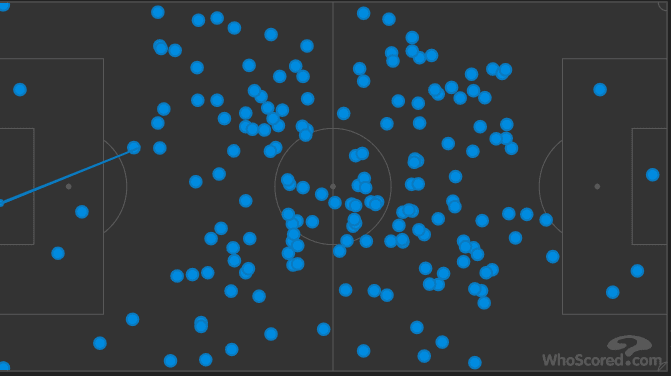
Wolfsburg struggled to attack with width
As mentioned above, Wolfsburg’s primary tactic was to attack with width and look to cross into the box as much as possible. This tried to play to the physicality of Weghorst and Mehmedi upfront. However, this effort was stifled by Hoffenheim. The visitors, knowing they had the advantage in midfield, were extremely cautious in conceding any space in the wide areas. The Hoffenheim full-backs rarely got forward and were satisfied with sitting deep and defending against the likes of Brekalo. Hoffenheim’s right-flank was extremely well-shielded as they played two defenders in Posch and Kadeřábek instead of opting for a winger instead.
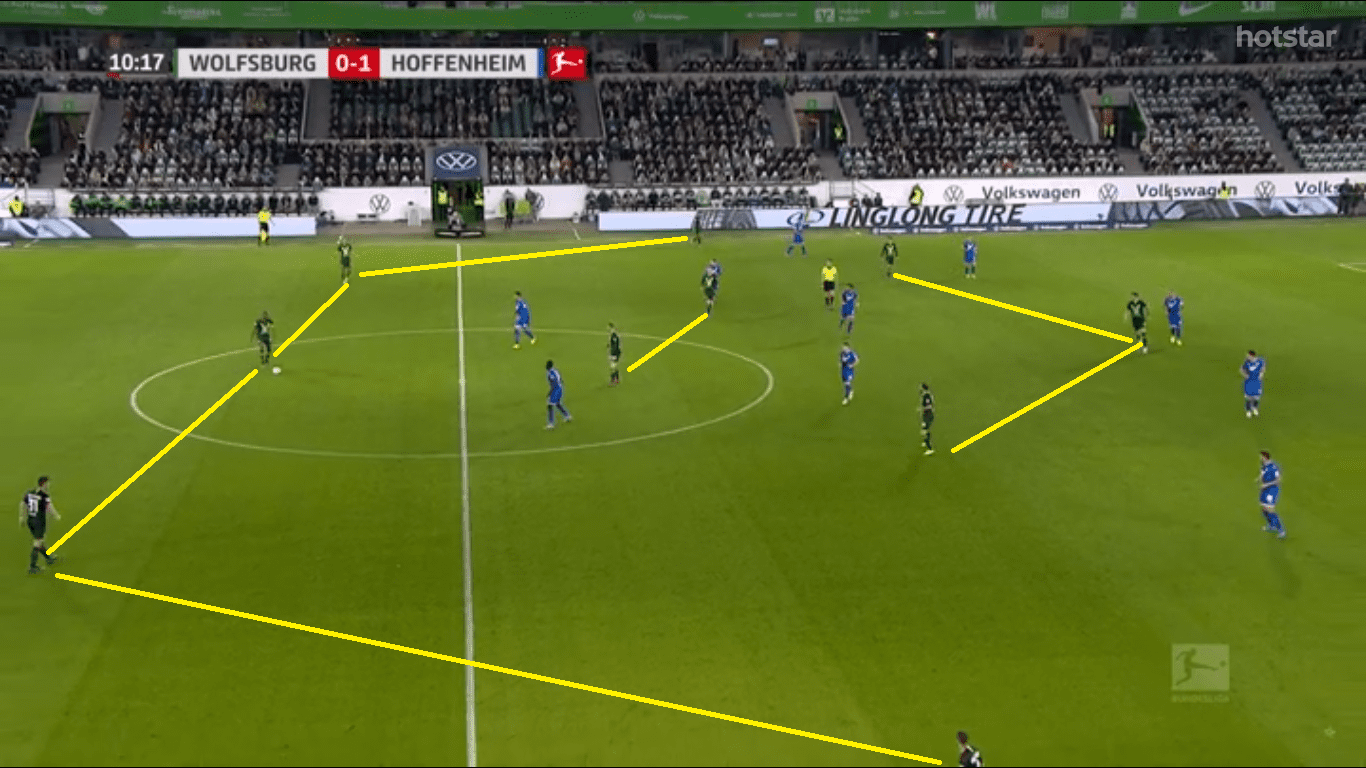
Wolfsburg also missed a trick in the way they failed to bring their wing-backs into the game more. Both William and Steffen are talented wide-players and ought to have been brought into the game a lot more than they were.
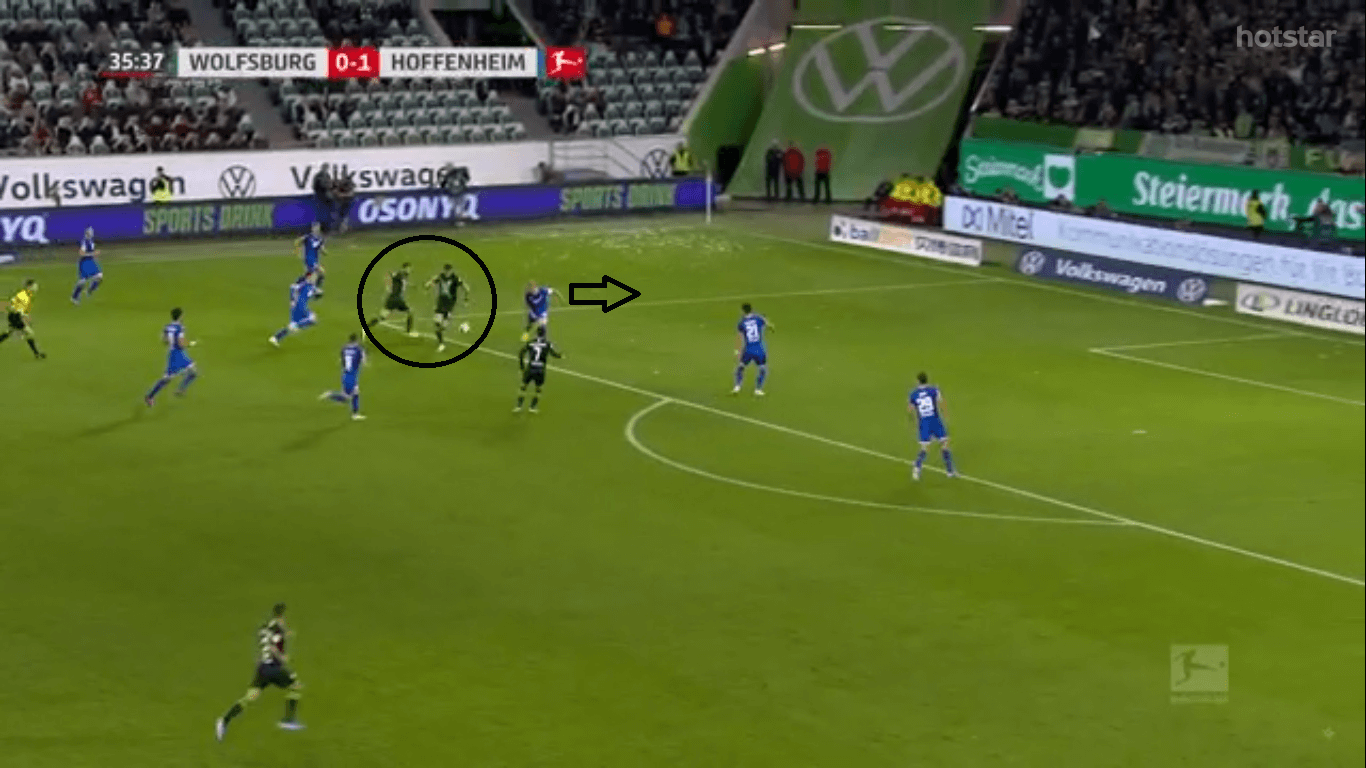
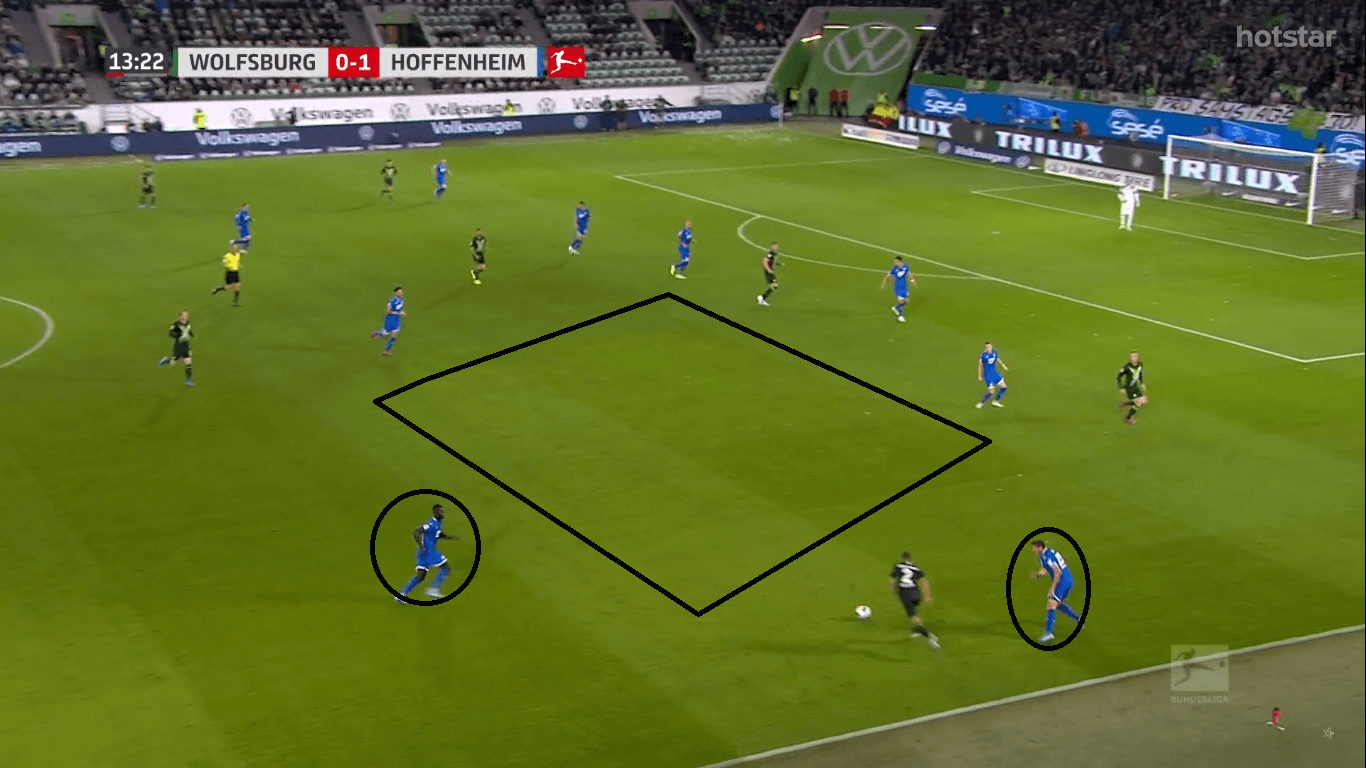
Hoffenheim bypass the press
Hoffenheim’s methods of bypassing the press were quite impressive as Wolfsburg’s intensity was nullified by the midfield trio. Grillitsch, Geiger and Rudy make a very well-rounded midfield bringing accurate passing, quick movement and intelligence to the Hoffenheim midfield. Grillitsch frequently positioned himself between the lines to receive possession before Geiger or Rudy arrived to give him a passing option.
Grillitsch made 66 passes while Rudy and Geiger made 44 and 37 respectively. Apart from this, Grillitsch also attempted six tackles, Rudy attempted five and Geiger four. Overall, the trio kept things ticking in the middle of the pitch without compromising on their defensive contributions. The trio’s total of 150 passes accounted for above 30 percent of the total passes made by Hoffenheim indicating how important they were to maintaining their dominance in midfield.
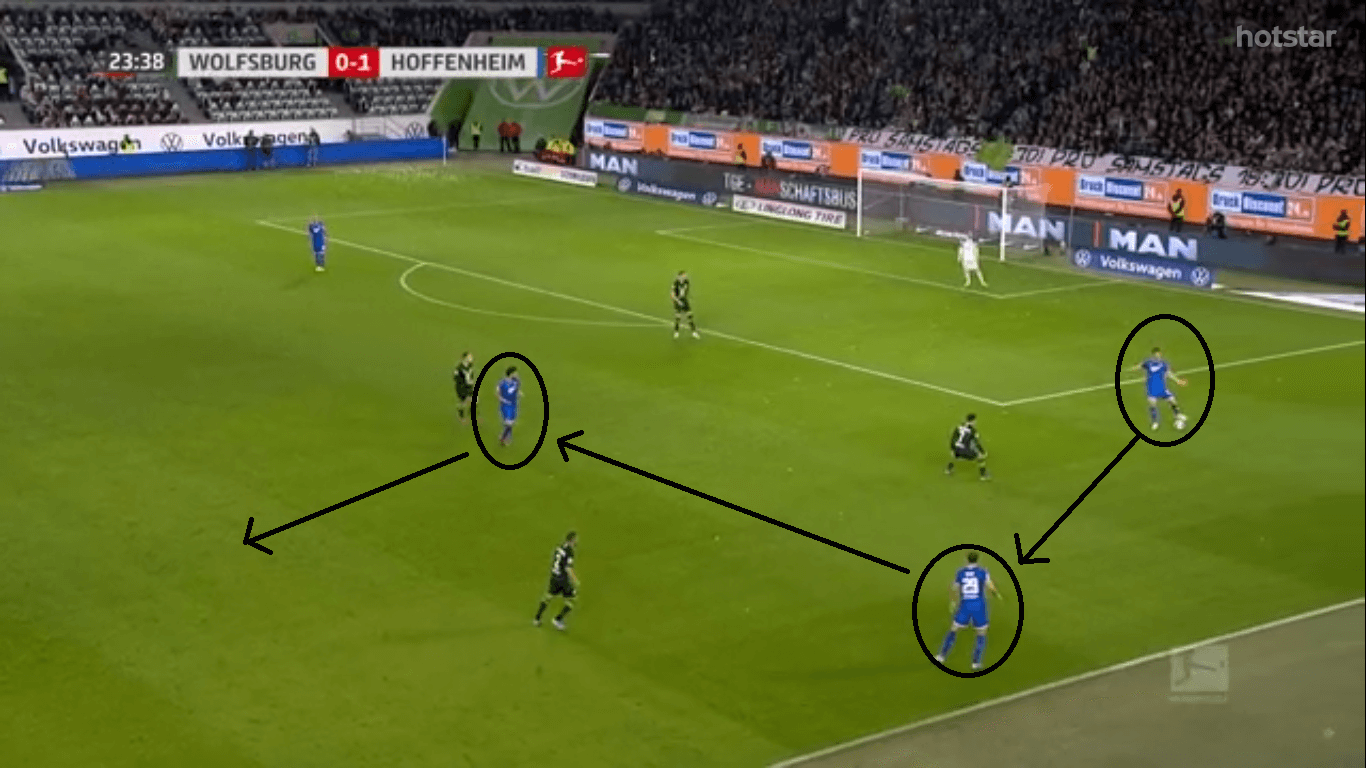
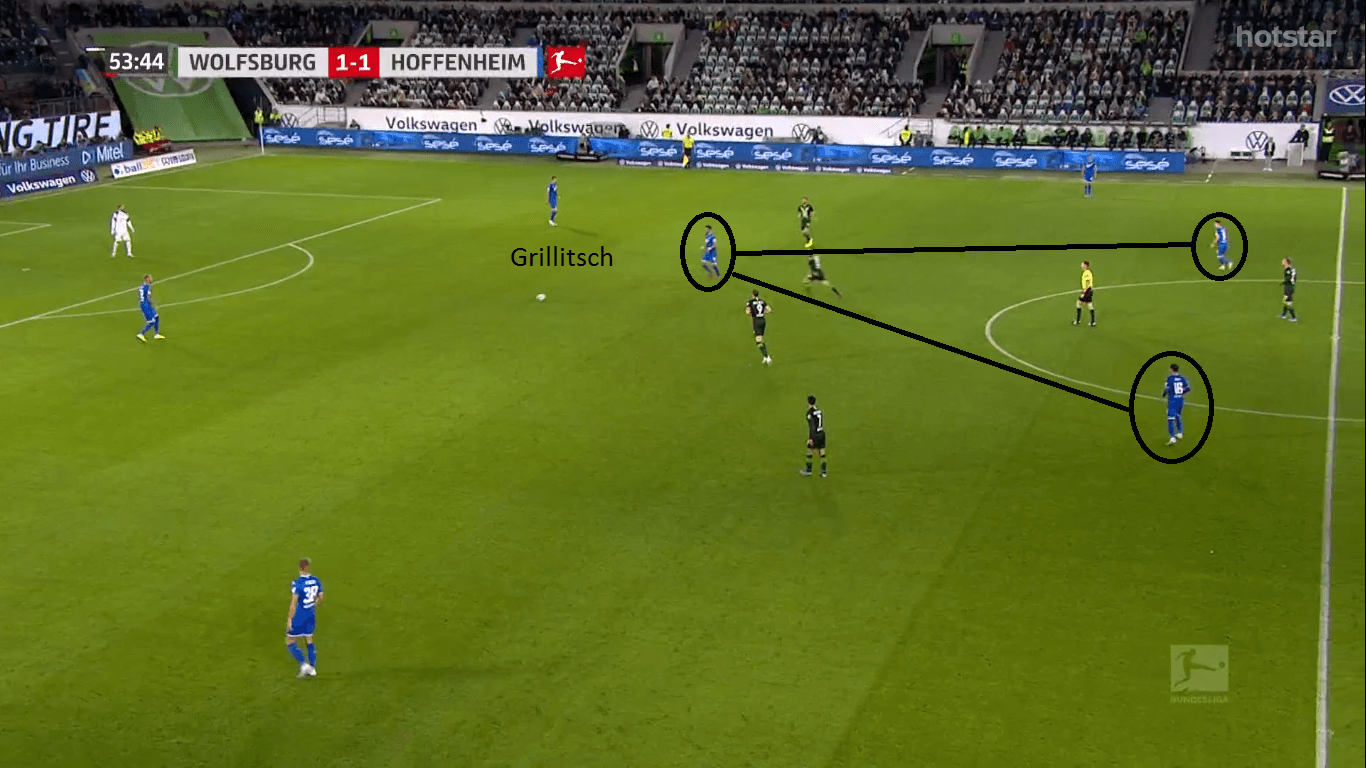
Robert Skov as a left-back
Robert Skov starting as a left-back was a surprising move on Schreuder’s part. The Danish winger has had a tentative start to his Hoffenheim career but had a solid game at left-back for Hoffenheim. The Dane made 74 passes, the highest in his team, and combined well with Bebou ahead of him. He also drifted into more central positions at times and alternated well between hugging the touchline and shifting inside.
Defensively, the Dane made no mistakes, attempting six tackles, making two interceptions and three blocks. Despite his positive performance, one can’t help but feel like Skov’s attacking potential is being wasted by playing him at left-back, Nevertheless, it was a good example of Dane’s versatility and commitment.
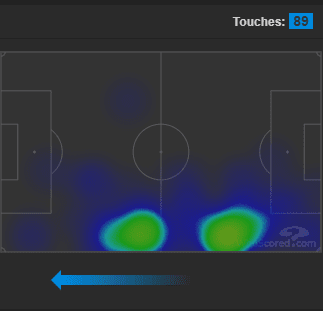
Conclusion
In conclusion, the result was fair given the balance of play between both sides. This analysis has shown the tactics employed by both sides in what was a fiercely contested draw. Wolfsburg will be disappointed to not take all three points, a result which would have seen them move into third place. Hoffenheim, on the other hand, put in a spirited performance and look to be gradually improving under Schreuder.

If you love tactical analysis, then you’ll love the digital magazines from totalfootballanalysis.com – a guaranteed 100+ pages of pure tactical analysis covering topics from the Premier League, Serie A, La Liga, Bundesliga and many, many more. Buy your copy of the September issue for just ₤4.99 here





Comments